'How deep is the ocean?'
ref. # 040c -How deep is the ocean?
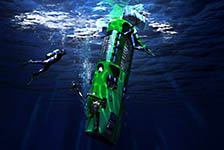 Nobody is interested in 'how deep is the ocean' by the meter and we all realise that 'how high is the sky' is unimaginable.
but I bet a lot of scientists got interested by reading of Jules Verne's book '20.000 leagues under the Sea' when they were young.
Nobody is interested in 'how deep is the ocean' by the meter and we all realise that 'how high is the sky' is unimaginable.
but I bet a lot of scientists got interested by reading of Jules Verne's book '20.000 leagues under the Sea' when they were young.
How much do I love you, I'll tell you no lie
How deep is the ocean? How high is the sky?
How many times a day do I think of you?
How many roses are sprinkled with dew?
How far would I travel to be where you are?
How far is the journey from here to a star?
And if I ever lost you, how much would I cry?
How deep is the ocean? How high is the sky?
And if I ever lost you, how much would I cry?
How deep is the ocean? How high is the sky?
Songwriters: Ted Shapiro / Jimmy Campbell and Reg Connelly
Published by: Lyrics © EMI Music Publishing
Read more: Ella Fitzgerald - How Deep Is The Ocean Lyrics | MetroLyrics
"The world's deepest point in the oceans is the Challenger Deep which is found within the Marianas Trench. The Marianas Trench is a depression (deep cracks) in the floor of the western Pacific Ocean. Marianas Trench is formed (as other ocean trenches) as a result of the oceanic plate being pushed against a continental plate whereby causing the oceanic plate to pushed downward making deep fissure. Its location is east of the Mariana Islands and is 1,554 miles long and averages 44 miles wide (see diagrams below). The Marianas Trench depth is 36,200 feet (11,033 m or 11.03 km)."
tellmewhyfacts.com
"To Answer Science's Enduring Questions
We know less about the deepest points on our planet than we do about the surface of Mars. The DEEPSEA CHALLENGE team is dedicated to advancing the world's understanding of our ocean's vast range of biological and geological phenomena. The historic expedition to the Mariana Trench's lowest point, the Challenger Deep, which lies 6.83 miles (10.99 kilometers) below the ocean surface, was the first extensive scientific exploration in a manned submersible of the deepest spot on Earth. On March 26, 2012, James Cameron successfully piloted the DEEPSEA CHALLENGER-outfitted for scientific exploration-to the ocean's deepest point, where he collected samples and documented the experience in the high-resolution 3-D for which he's known globally."
www.deepseachallenge.com
©: wordlesstech.com
tags: #Ella Fitzgerald #Mariana Trench #Challenger deep #James Cameron #Deepsea Challenge
ref. # 053 How deep is our Ocean? -Salp
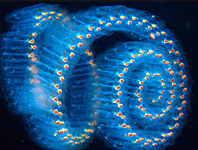 Salp chain, Off shore, San Diego.
Salp chain, Off shore, San Diego.Four-inch (10.2-centimeter) sea salps link together to make luminous chains up to fifteen feet (4.6 meters) long!
©: Mick McMurray
www.earthandseaphoto.com nationalgeographic.com
tags: #salp #ocean deep
ref. # 053a How deep is the ocean? -Oldest Water
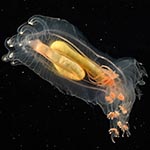 Earth's oldest body of water found beneath Canada contains more than all of the world's rivers, swamps and lakes put together
Geologists estimate ancient rocks contain around 2.5 million cubic miles of water, more than all of the world's rivers, swamps and lakes put together
Isotope testing has shown the water is up to 2.7 billion years old in places
Canadian and British researchers found ancient water bubbling up through fissures in the rock in 19 mines in Canada, South Africa and Scandinavia
Scientists say ancient water is viscous like maple syrup but tastes 'terrible'
Earth's oldest body of water found beneath Canada contains more than all of the world's rivers, swamps and lakes put together
Geologists estimate ancient rocks contain around 2.5 million cubic miles of water, more than all of the world's rivers, swamps and lakes put together
Isotope testing has shown the water is up to 2.7 billion years old in places
Canadian and British researchers found ancient water bubbling up through fissures in the rock in 19 mines in Canada, South Africa and Scandinavia
Scientists say ancient water is viscous like maple syrup but tastes 'terrible'©: Read more: www.dailymail.co.uk
www.livescience.com
www.newscientist.com
tags: #
ref. # 053b How deep is the ocean? -'Immortal' Jellyfish
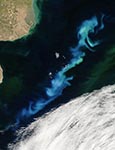 "About as wide as a human pinky nail when fully grown, the immortal jellyfish (scientific name: Turritopsis dohrnii) was discovered in the Mediterranean Sea in 1883. But its unique ability was not discovered until the 1990s."
"About as wide as a human pinky nail when fully grown, the immortal jellyfish (scientific name: Turritopsis dohrnii) was discovered in the Mediterranean Sea in 1883. But its unique ability was not discovered until the 1990s."news.nationalgeographic.com
"After more than 4,000 years - almost since the dawn of recorded, ime, when Utn, ishtim told Gilgamesh that the secret to immortality lay in a coral found on the ocean floor - man finally discovered eternal life in 1988. He found it, in fact, on the ocean floor. The discovery was made unwittingly by Christian Sommer, a German marine-biology student in his early 20s. He was spending the summer in Rapallo, a small city on the Italian Riviera, where exactly one century earlier Friedrich Nietzsche conceived "Thus Spoke Zarathustra": "Everything goes, everything comes back; eternally rolls the wheel of being. Everything dies, everything blossoms again .."
Read more: www.nytimes.com
and hubpages.com/education/immortal-jellyfish
Believe it or not, this jellyfish is biologically immortal. The jellyfish, Turritopsis dohrnii but formerly classified as Turritopsis nutricula, can revert back to its childhood stage through a process called transdifferentiation. It can only be killed by predation or by getting sick.
http://en.wikipedia.org/wiki/Transdifferentiation
©: photograph Takashi Murai
tags: #Turritopsis dohrnii #Takashi Murai #immortal jellyfish
054 How high is the Sky? -Ant Planetary Nebula
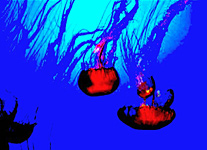 "The Ant planetary nebula (Menzel 3 or Mz 3). STScI-PRC2001-05. This NASA/ESA Hubble Space Telescope image reveals the ant's body as a pair of fiery lobes protruding from a dying, Sun-like star. Though approaching the violence of an explosion, the ejection of gas from the dying star at the center of Mz3 has intriguing symmetrical patterns unlike the chaotic patterns expected from an ordinary explosion. Scientists using the Hubble space telescope would like to understand how a spherical star can produce such prominent, non-spherical symmetries in the gas that it ejects.
"The Ant planetary nebula (Menzel 3 or Mz 3). STScI-PRC2001-05. This NASA/ESA Hubble Space Telescope image reveals the ant's body as a pair of fiery lobes protruding from a dying, Sun-like star. Though approaching the violence of an explosion, the ejection of gas from the dying star at the center of Mz3 has intriguing symmetrical patterns unlike the chaotic patterns expected from an ordinary explosion. Scientists using the Hubble space telescope would like to understand how a spherical star can produce such prominent, non-spherical symmetries in the gas that it ejects.©: Mike Herbaut & the ESA/ESO/NASA Photoshop FITS Liberator
tags: #Arctic ant Nebula #ESO #NASA
054a How high is the Sky? Phytoplankton
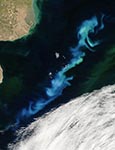 "Brilliant streaks of blue and duller swirls of green color the South Atlantic Ocean in this Moderate Resolution Imaging Spectroradiometer (MODIS) image, taken on January 4, 2005, by NASA's Terra satellite. The colors are a result of millions of microscopic plants growing near the surface of the water. Called phytoplankton, some varieties of the plants are coated with white scales. When viewed through the ocean waters, the floating white plants appear blue. In places, chlorophyll gives the waters a green tint."
"Brilliant streaks of blue and duller swirls of green color the South Atlantic Ocean in this Moderate Resolution Imaging Spectroradiometer (MODIS) image, taken on January 4, 2005, by NASA's Terra satellite. The colors are a result of millions of microscopic plants growing near the surface of the water. Called phytoplankton, some varieties of the plants are coated with white scales. When viewed through the ocean waters, the floating white plants appear blue. In places, chlorophyll gives the waters a green tint."earthobservatory.nasa.gov
©: NASA image courtesy Jeff Schmaltz, MODIS Land Rapid Response Team at NASA GSFC
tags: #ocean deep #phytoplankton
